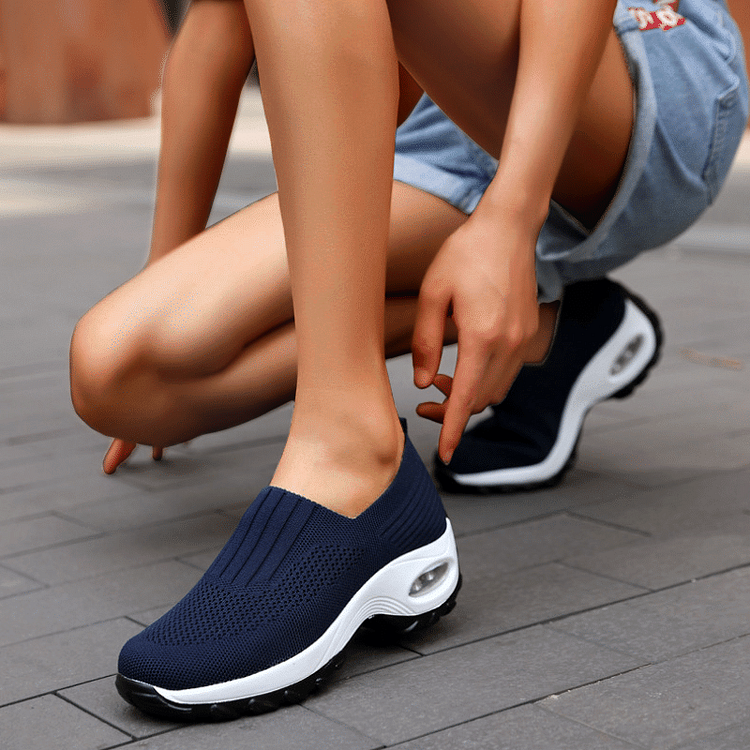Plantar fasciitis is a common cause of heel pain, affecting millions of Americans each year. This painful condition results from inflammation of the plantar fascia, the thick band of tissue that runs across the bottom of the foot. Many individuals seeking relief turn to orthopedic shoes specially designed to alleviate discomfort and provide better foot support. In this article, we will explore what orthopedic shoes for plantar fasciitis are, how they work, and the best options available on the market.
Understanding Plantar Fasciitis
Before diving into orthopedic shoes, it’s crucial to understand the condition. Plantar fasciitis typically causes a sharp pain in the heel, especially during the first steps of the day or after prolonged sitting. Factors contributing to this condition include:
- Age: Most commonly affects adults aged 40 to 60.
- Obesity: Excess weight adds strain to the plantar fascia.
- Work-related factors: Jobs that require long hours of standing or walking.
- Foot mechanics: Flat feet or high arches can lead to improper weight distribution.
Importance of Orthopedic Shoes
Orthopedic shoes are specifically designed to support the foot’s structure, alleviate pain, and enhance comfort. For individuals with plantar fasciitis, the right pair of shoes can make a significant difference in their day-to-day lives.

Key Features of Orthopedic Shoes for Plantar Fasciitis
- Arch Support: Proper arch support distributes weight evenly and reduces stress on the plantar fascia.
- Cushioning: Ample cushioning helps absorb shock and provides comfort during walking.
- Heel Stability: A firm heel counter provides stability and prevents excessive foot motion.
- Wide Toe Box: Allows for natural toe movement and prevents cramping.

Types of Orthopedic Shoes for Plantar Fasciitis
1. Athletic Shoes
Athletic shoes designed for running or walking often feature advanced cushioning, arch support, and breathable materials.

2. Casual Shoes
These shoes combine comfort with style, suitable for daily wear while providing necessary support.
3. Sandals
Many orthopedic sandals come equipped with built-in arch support and cushioning, perfect for warmer climates.

4. Specialty Shoes
Specialty shoes are tailored to specific foot conditions, often recommended by healthcare professionals.
Top Brands for Orthopedic Shoes

Comparison of Leading Brands
| Brand | Type | Key Features | Price Range |
|---|---|---|---|
| Asics | Athletic | Gel cushioning, arch support | $100 – $160 |
| Brooks | Athletic | Soft cushioning, responsive midsole | $120 – $180 |
| Hoka One One | Athletic | Maximum cushioning, lightweight | $130 – $180 |
| Orthofeet | Specialty | Diabetic-friendly, adjustable | $120 – $220 |
| NAOT | Casual/Sandal | Natural footbed, fashionable | $120 – $200 |
How to Choose the Right Orthopedic Shoes

Factors to Consider
When purchasing orthopedic shoes, keep the following factors in mind:
- Fit: Always ensure the shoes are the right size; tight shoes can exacerbate pain.
- Material: Choose breathable materials to keep your feet dry and comfortable.
- Insoles: Consider custom orthotic insoles if you need extra support.
- Consult a Professional: Always consult a podiatrist for tailored recommendations.

Tips for Managing Plantar Fasciitis
1. Stretch Everyday
Incorporate calf stretches, toe stretches, and plantar fascia stretches into your daily routine.

2. Use Ice Therapy
Apply ice to the affected area for 15-20 minutes after standing or physical activity to reduce inflammation.
3. Maintain a Healthy Weight
Reducing excess weight can decrease the strain on the plantar fascia.
4. Consider Physical Therapy
A physical therapist can design a personalized rehabilitation program to strengthen foot muscles.
Common FAQs about Orthopedic Shoes for Plantar Fasciitis
What are the benefits of wearing orthopedic shoes for plantar fasciitis?
Orthopedic shoes provide superior cushioning, stability, and arch support, which can help alleviate pain associated with plantar fasciitis.
Can I wear my orthopedic shoes all day?
Yes, orthopedic shoes are designed for all-day wear. However, listen to your body and adjust as necessary.
How often should I replace my orthopedic shoes?
It is recommended to replace orthopedic shoes every 6 to 12 months, depending on wear and tear.
Are orthopedic shoes covered by insurance?
Many insurance plans cover orthopedic shoes, but it’s essential to check with your provider for specific coverage details.
Final Thoughts
Finding the right orthopedic shoes for plantar fasciitis can significantly improve your quality of life and help manage pain effectively. By considering key features, understanding your unique foot needs, and following the tips provided, you can take substantial strides toward comfort and mobility. Consult with a podiatrist to tailor your choices further, ensuring the best fit for your individual situation.
Further Reading
For additional information on plantar fasciitis and its management, consider checking out the following resources:
- American Podiatric Medical Association – Plantar Fasciitis
- National Institutes of Health – Treatment of Plantar Fasciitis
References
1. Henn, C. et al. “Plantar Fasciitis: A Systematic Review of the Literature.” PubMed, 2018.
2. Hassebrock, J. et al. “Effect of Footwear on Plantar Fasciitis: A Systematic Review.” NCBI, 2019.